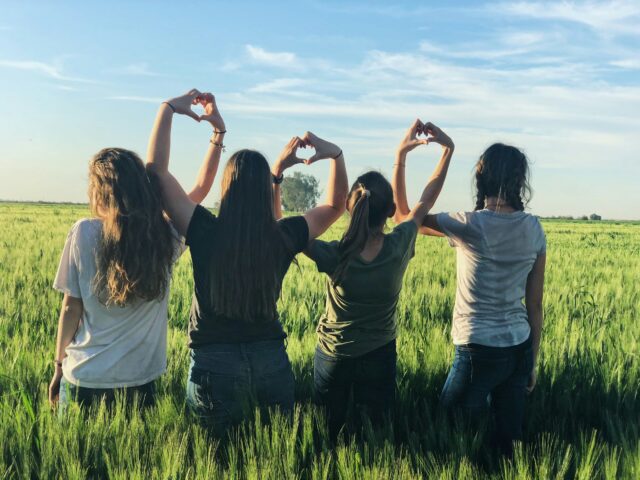Outside of school, camp is one of the safest places for children to learn and practice empathy. Incorporating kindness-based activities into your camp’s agenda is a fun way to work in that practice.
Get started by learning how to explain this nuanced concept to children.
Explaining the concept of empathy to campers
At its most basic, empathy is being able to understand how another person is feeling. Younger kids may understand this better with the saying, “put yourself in their shoes.”
This invites them to imagine what someone else’s situation is like and what emotions they may be experiencing. Use examples from books, TV shows, or movies to help.
For example, you could explain empathy by discussing a popular children’s movie character. Bring up the conflict of the movie and ask how it made the kids feel.
Did they feel excited? Scared? How does that compare to what the character felt? Emphasize that making an effort to understand the feelings of others––whether they are characters or friends––is the core of empathy.
5 empathy-building camp activities
After your campers are on the same page about what empathy is, you can dive into some empathy- and kindness-driven activities to practice.
1. Empathy maps
An empathy map is a diagram that helps a person visually plot out their feelings. Understanding one’s own emotions is essential for building empathy, so this activity is the perfect building block for other empathy-promoting work.
In the center of a piece of paper, ask campers to draw a representation of themselves. It doesn’t have to be “good” – a stick person is fine!
Then, ask them to divide the space around the figure into six different sections. Label the sections as follows:
- Feeling
- Thinking
- Hearing
- Seeing
- Saying
- Doing
Next, campers should write an “issue” at the top of the paper. This could be something good, bad, recent, or far in the past. Finally, give campers time to write what that issue made them feel, think, hear, see, say, and do in their respective sections.
When the maps are complete, discuss the emotions in small groups. For older kids, consider dividing the six sections further into “expectations” and “reality” to explore the difference between their emotional perception and what really happened.
2. Group volunteer work
Choose a local food pantry or other charity that your campers can work together to help. For example, you could package hygiene kits or make kid-friendly baked goods.
Before starting the activity and working together, discuss the charity’s cause as a group. Some questions to cover include:
- What is this charity’s mission?
- What does it do for our local community?
- Why does our local community need that help?
- Who in our local community needs that help?
- How can we contribute to this charity’s cause beyond our activity today?
The more campers think about the why behind their charitable actions, the more they’ll build empathy while they collaborate.
You could also reach out to your local animal shelter and ask if they have a reading program.
Spending time with animals is a simple way to encourage kindness and patience.
Shelter reading programs involve children reading to adoptable pets. You could take a field trip to the shelter or ask them to bring the animals to your camp.
Kids love meeting new animal friends, and practicing reading skills is always a bonus!
3. First aid practice
Building empathy in children means nurturing the parts of them that want to help others. Teaching first aid is a practical way to give kids the tools they need to help a fellow camper if something goes wrong.
Younger campers can start with simple tasks like cleaning scrapes and applying bandages. Older campers could learn CPR or work toward first aid certifications.
After some basic training, campers will not only know how to care for their own injuries but also feel more confident spreading that kindness to others.
4. Kindness paper chain
This activity turns a classroom paper chain into a woven story of kind acts at your camp. On strips of paper, ask each child to write down something kind another camper did for them.
Wrap the strips around each other and tape the ends to form a chain. As camp goes on, encourage campers to add a link to the chain every time someone is kind to them.
At the end of camp, reflect on how long your kindness chain grew together!
5. Staff thank you cards
You know that counselors and staff are incredibly important to your camp. However, many campers could take them for granted without a gentle reminder.
In small groups, ask campers to decorate one shoebox per staff member to be their “mailbox.” Before the end of camp, each kid should put at least one thank you note in each box.
You can make it easier by printing out templates or just provide craft supplies and let campers get creative on their own. This activity is a heartwarming practice of expressing gratitude that has the extra positive effect of making your staff feel appreciated.
About CampSite
CampSite’s comprehensive camp management software is relied on by camps of all kinds across the country. Our customizable platform, frequent product updates, and 5-star support team make us a trusted and necessary camp management tool.
Want to learn more?
Request a free personalized demo with one of our sales experts!
